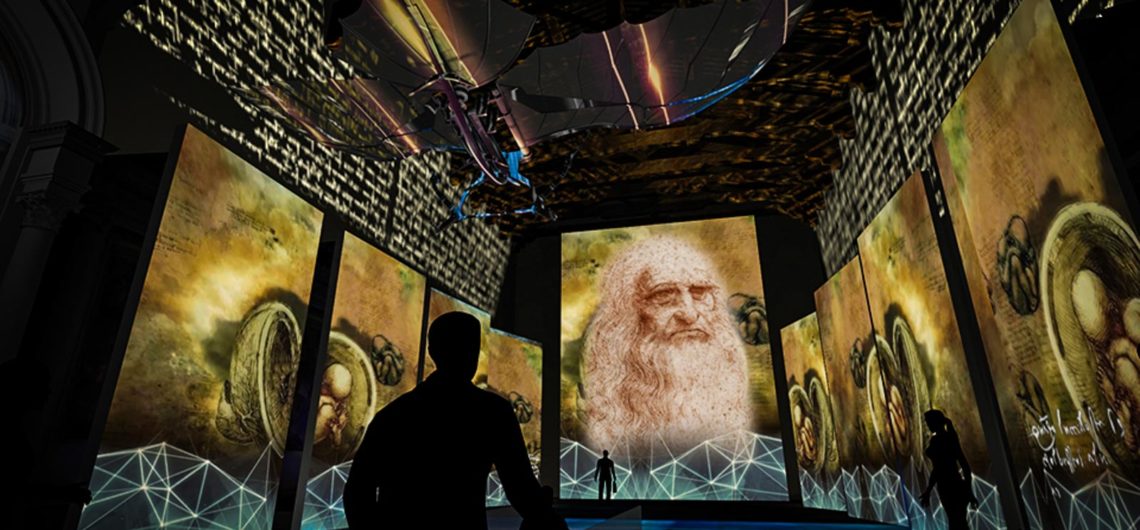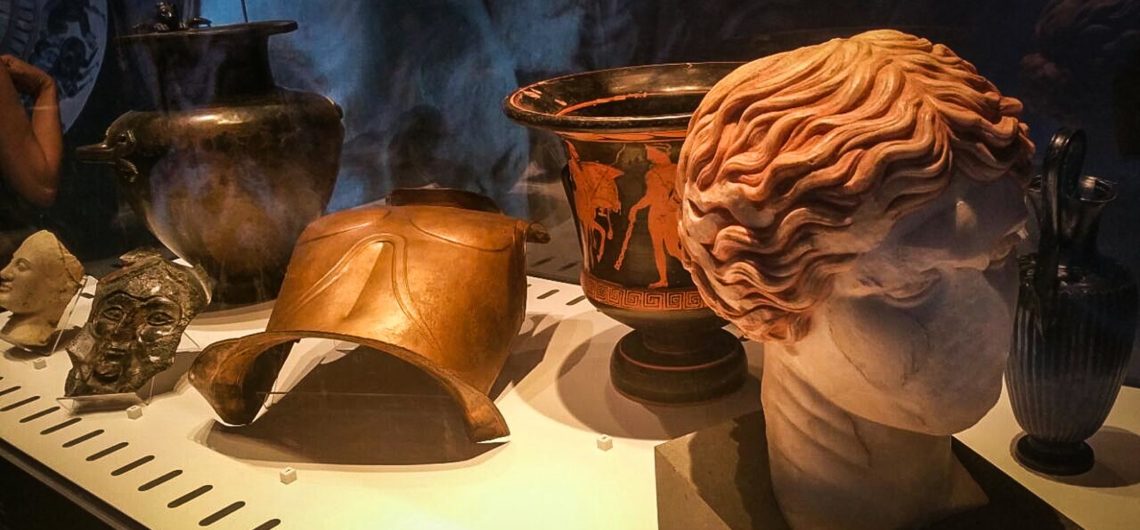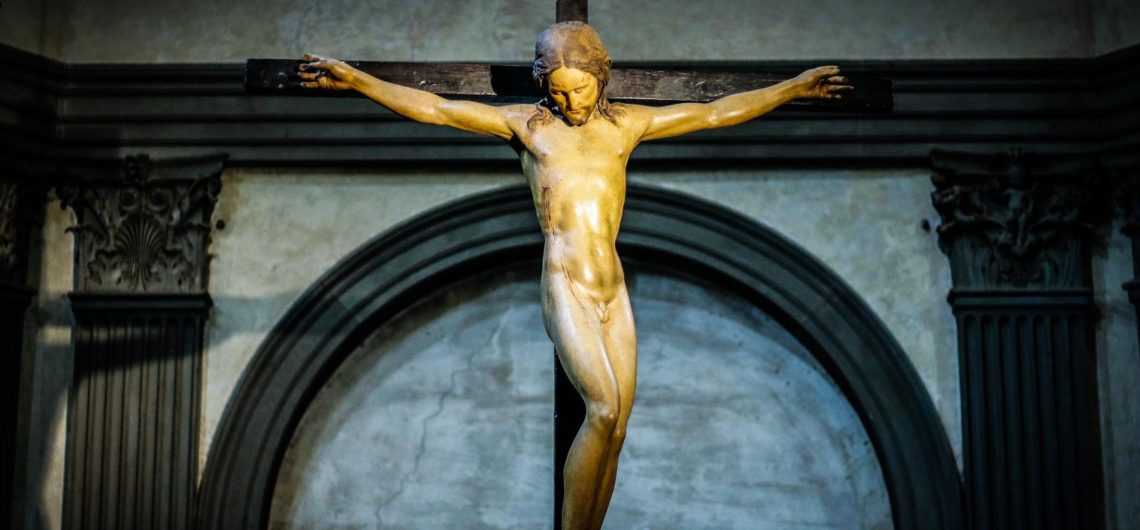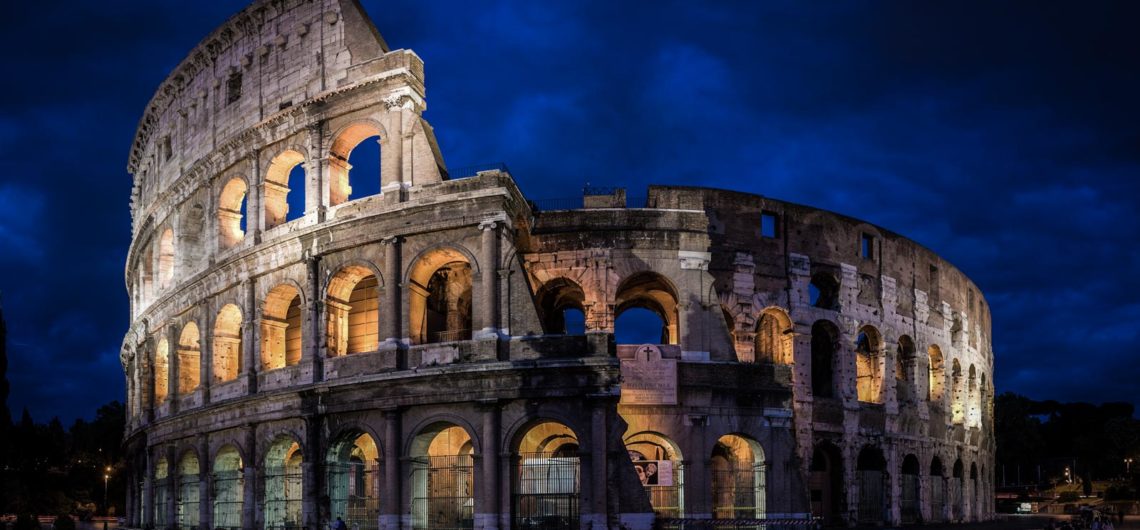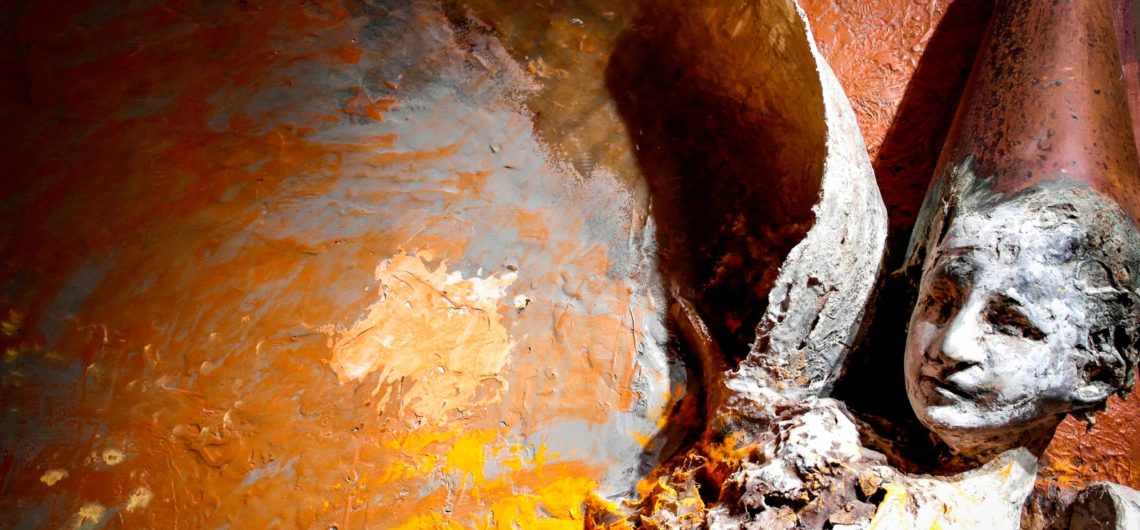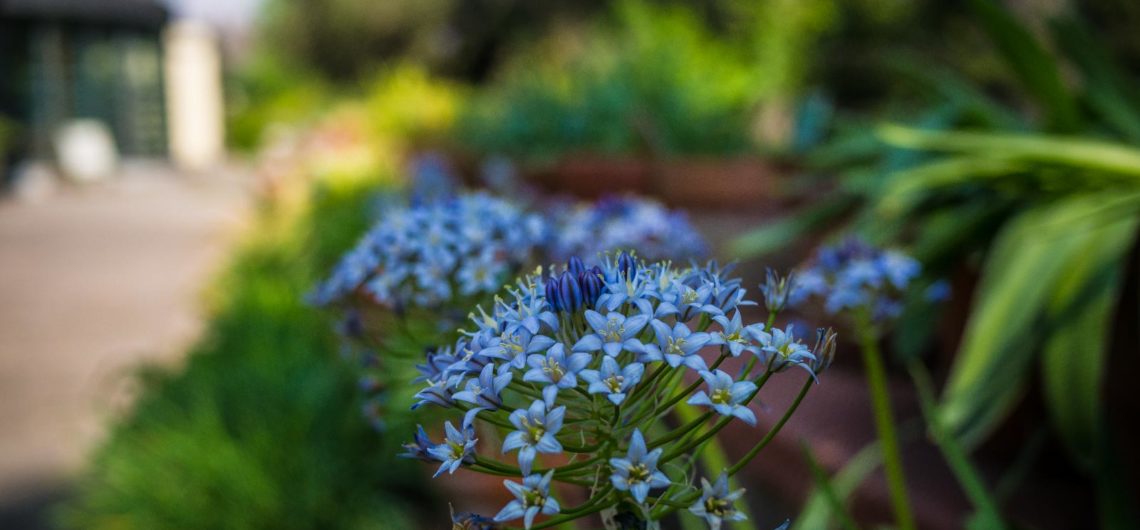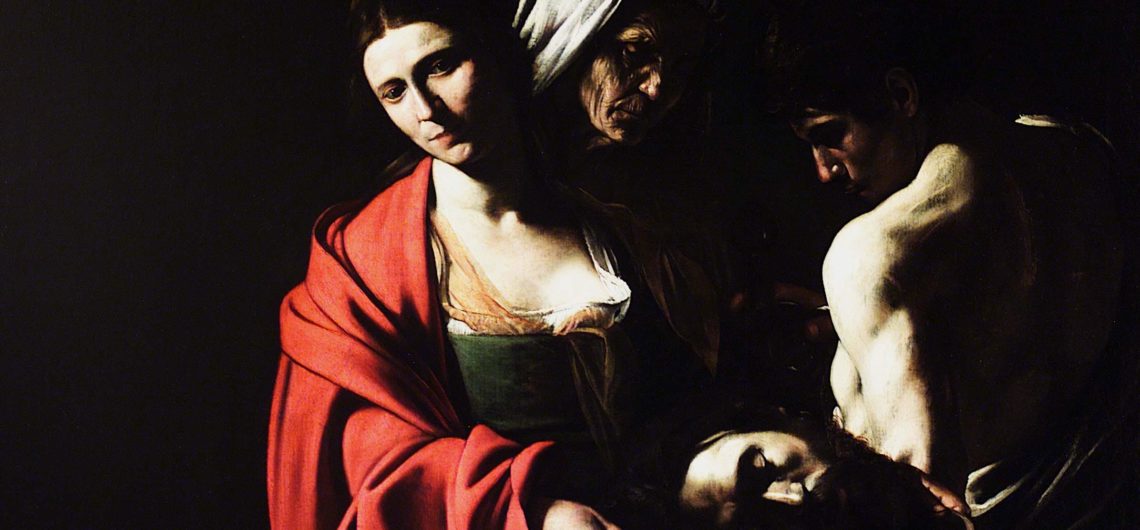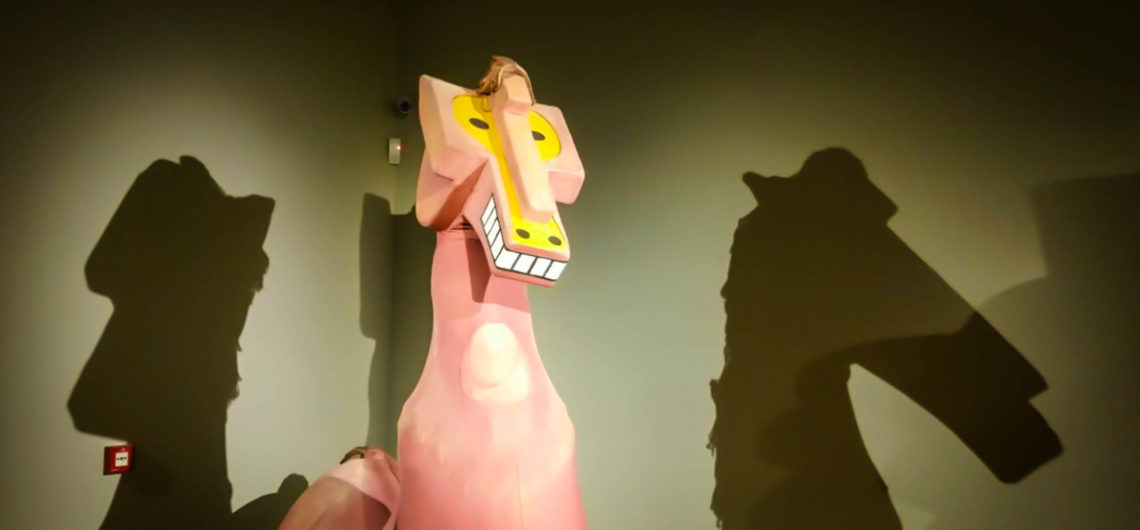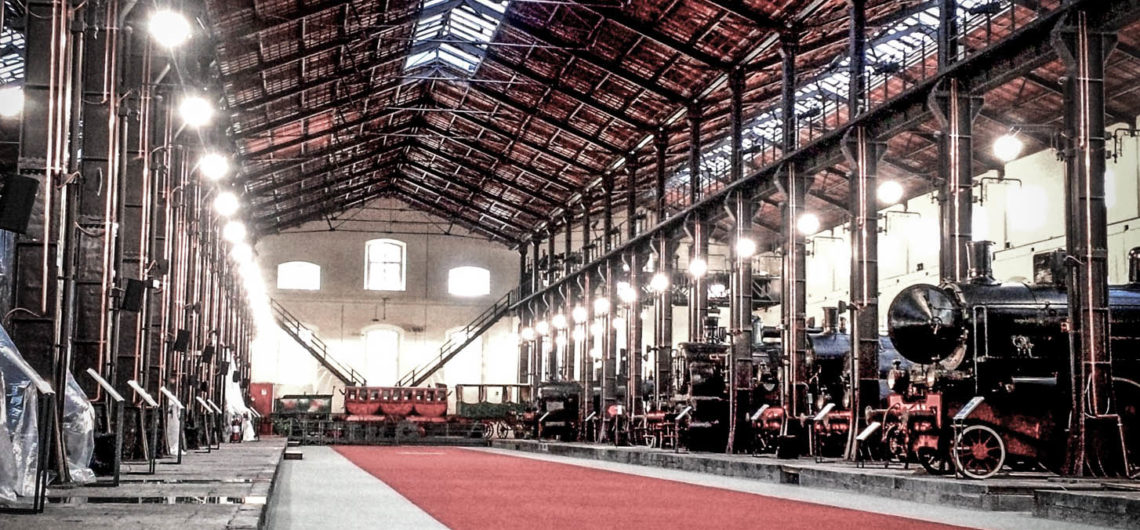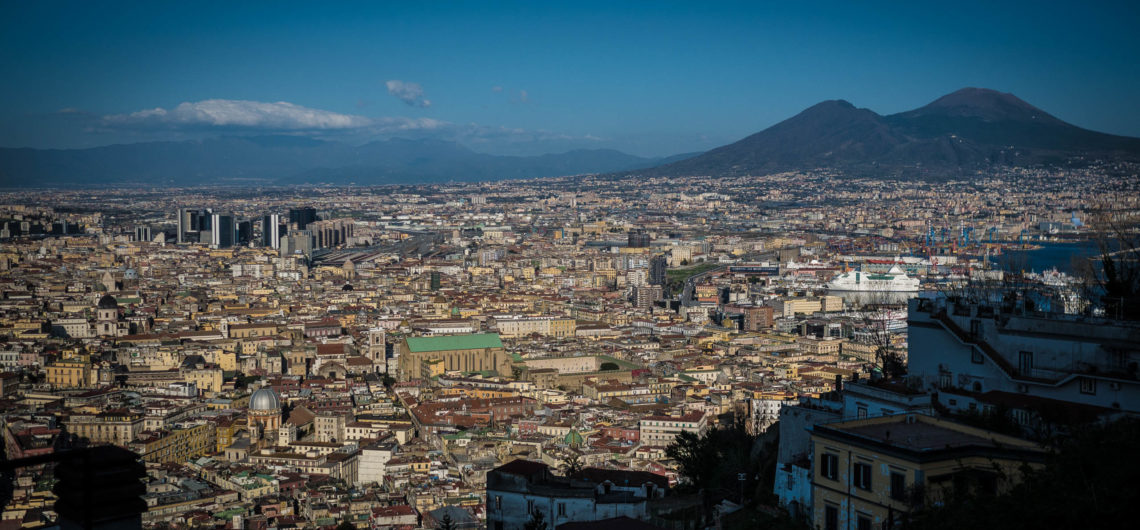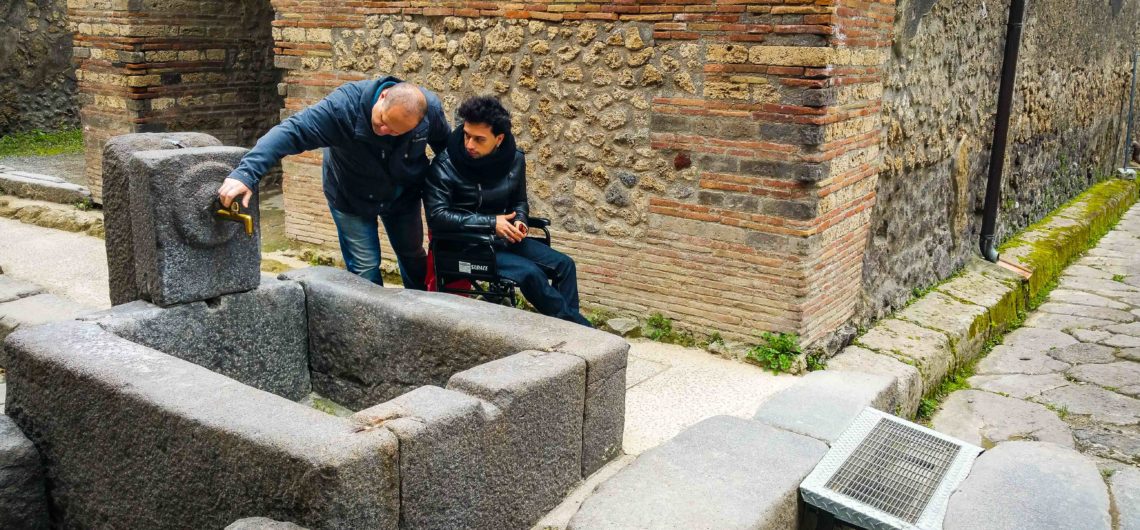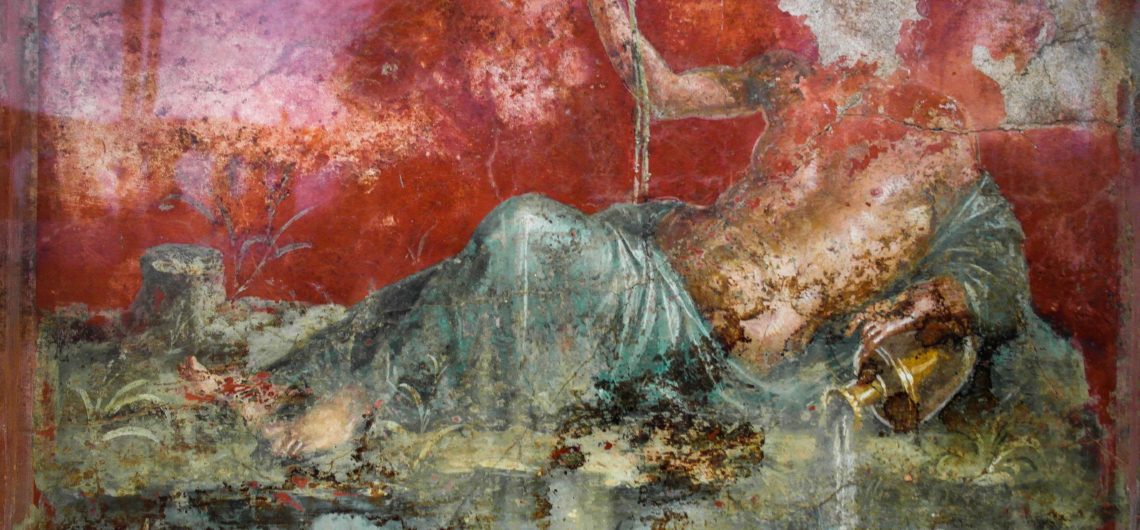From May 13th to October 8th 2017 the deconsecrated church of Santo Stefano al Ponte in Florence, hosts the unique multimedia exhibit “Da Vinci Experience” dedicated to the genius of Leonardo da Vinci, his science and his eclectic life. The exhibition project, based on the concept of edutainment (or rather educational entertainment), provides the visitor with a unique and unforgettable experience, through huge screens and hundreds of scanned images in high-definition, full HD video, sound effects and Dolby surround soundtracks. The exhibition is a multimedia journey, a vibrant symphony of light, colour and sound to the discovery of the Italian
Considered one of the most interesting cultural events of 2017 in Italy and in the wider Mediterranean region, the amazing exhibit “Pompeii & the Greeks”, inaugurated on April 12 in the Palestra Grande of Pompeii, illustrates the magnificence of Ancient Greece and its relationship with the Mediterranean Sea. Starting from Pompeii and examining its frequent contacts with the Greek Mediterranean, the exhibition sheds light on the many different souls of this ancient city, and its temporary and yet multiple identity. With more than 600 findings on display, including ornaments, ceramics, architectural elements, weapons, sculptures, inscriptions and silverware from Pompeii, Cumae,
One of Michelangelo‘s most important early works, the 53-inch wooden Crucifix has now returned to its rightful place, the Basilica of Santo Spirito in Florence. After a one-year absence and a tour between Naples and Turin, the Crucifix will be finally on display above the old Sacristy, by the west aisle of the church. Michelangelo sculpted the nude Jesus at 18, when he was living in the Basilica of Santo Spirito with the Augustine monks. After the death of Lorenzo de Medici, the monks hosted him and let Michelangelo acquire familiarity with human anatomy by studying the corpses from the
After the extraordinary success of the Colosseum openings at nights, every tourist can finally experience the Roman Forum and Rome under the moonlight! Every Friday and Saturday from the 5th of May until the end of October it is possible to explore with a night walking tour both the Roman Capitol and the Imperial Forum. Thanks to a new lighting installation developed by the Acea Group in accordance with the surrounding monuments, will be possible to discover these amazing ruins and the centre of the Ancient Rome under the moonlight in a magical atmosphere. The itinerary follows the “Via Sacra”, the
From April to June 2017, the Archaeological Museum of Naples (Mann) presents the exhibit “KOKOCINSKI. Life and Mask: from Pulcinella to Clown” of the Italian contemporary artist – with Polish-Russian origin – Alessandro Kokocinski. The exhibition includes more than 70 artworks created by Kokocinsky with different innovative techniques such as installations, paintings, videos, sculptures, high-relief sculptures, drawings, poems, sketches – all inspired by the metamorphosis of the “Mask” and the circus. In the nearly ʽ60s in Buenos Aires, Kokocinski joined indeed the amazing world of the circus, as acrobat and began to travel to Latin America meeting many great circus
The “Università degli Studi di Napoli Federico II” presents the V edition of “Planta – not just garden”, a show-market held in Naples’ Botanical Garden dedicated to spontaneous and cultivated plants, botanical rarity, exotic flora and food products of plant origin. The event is free and will be opened to the public on 5th, 6th & 7th May 2017 all along the tree-lined avenues of the Botanical Garden. Planta V Edition represents a great showcase for all Italian plant and flora nurseries and an important reference event for all garden lovers who will be able to find among the stalls
The exhibit “From Caravaggio to Bernini” has been recently inaugurated at the Scuderie del Quirinale in Rome and will be open to the public until July 30th 2017. This remarkable selection of paintings and sculptures of Italian masterpieces from the Spanish Royal Collection have been selected on the basis of their outstanding artistic and historical value and reveals the history of political and cultural relationships between the Spanish Court and the Italian States during the 17th century. From the mid-16th century onwards the art collection of the Spanish Hapsburgs was indeed enriched with several remarkable diplomatic gifts kindly offered by
The Musée Picasso in Paris has set up 40 exhibitions in Italy, Morocco, Greece, Spain, France and Cyprus to celebrate Picasso’s 1917 journey to Italy and his lifelong relationship with the Mediterranean basin. The global exhibit “Picasso- Méditerranée” will take place from Spring 2017 until Spring 2019 with more than 60 institutions from 8 different counties involved in developing exhibition projects on the extraordinary works of Pablo Picasso. On the occasion of this global initiative the Italian Ministry of Culture and Tourism and the Campania Region will promote the exhibit “Picasso and Naples: Parade” , inaugurated in Capodimonte Museum and
Pietrarsa Railway Museum is now connected to Naples Piazza Garibaldi Tube Station and to Naples Central Station! Tourist and visitors can comfortably reach the Museum with the Pietrarsa Express, an historic train ride, and learn all about 170 years of Italian railway history! Pietrarsa is indeed one of the most important train museum in Europe and it has been recently involved in important restoration works to renovate the ancient structures and locomotives and improve its accessibility to the public. Pietrarsa Railway Museum, divided into pavilions, hosts the largest exhibit of historical trains in Italy with more than 50 historic railroad
On January 2017 the Museum of St. Elmo Castle inaugurated the art installation Follow the Shape by the artist Paolo Puddu. This young Neapolitan artist created a tactile experience different from the visual one by using the braille writing system to “describe” Naples landscape and reveal the unseen to blind people. The star-shaped medieval fortification of St. Elmo Castle, built in 1349 by Robert of Anjou with its breath-taking view of Naples from above, has become a place for a unique sensory experience through the installation of a metal handrail all around the panoramic terrace to turn the raised dots of
The project “Pompeii for all. Accessibility paths overcoming architectural barriers” can be considered Italy’s longest barrier-free path and it represents another step forward in the rebirth of Pompeii Archaeological Site. It makes finally possible to all visitors with disabilities to access the archaeological area in order to appreciate this unique World Heritage Site. From the main entrance of Piazza Anfiteatro to Porta Marina exit disabled persons, partially-sighted people, family with strollers or pushchairs and wheelchair users will be able to explore through a specific path some of the most important areas of town with its outstanding buildings. The itinerary, part
With the recent “Widespread Museum Project” the display of archaeological findings from the Excavations on site continues. In the Palestra Grande of Pompeii some organics finds and treasures belonging to the site of Moregine will be shown to the public in a permanent exhibit. Campaigns of excavation The first fortuitous discovery in Moregine took place in 1959 during the construction of the Naples-Salerno Motorway. The site is placed 600 m south of Pompeii Ruins, where once was the delta of River Sarno, an area that was vital to the economy of the Ancient town of Pompeii. They revealed a villa
